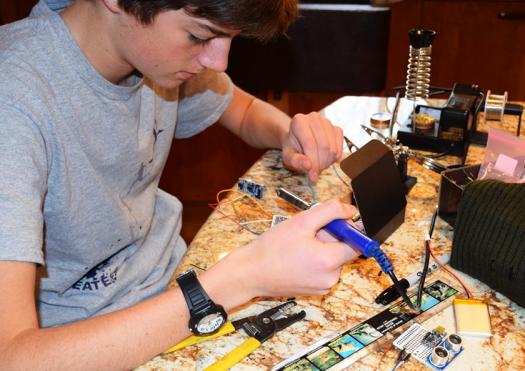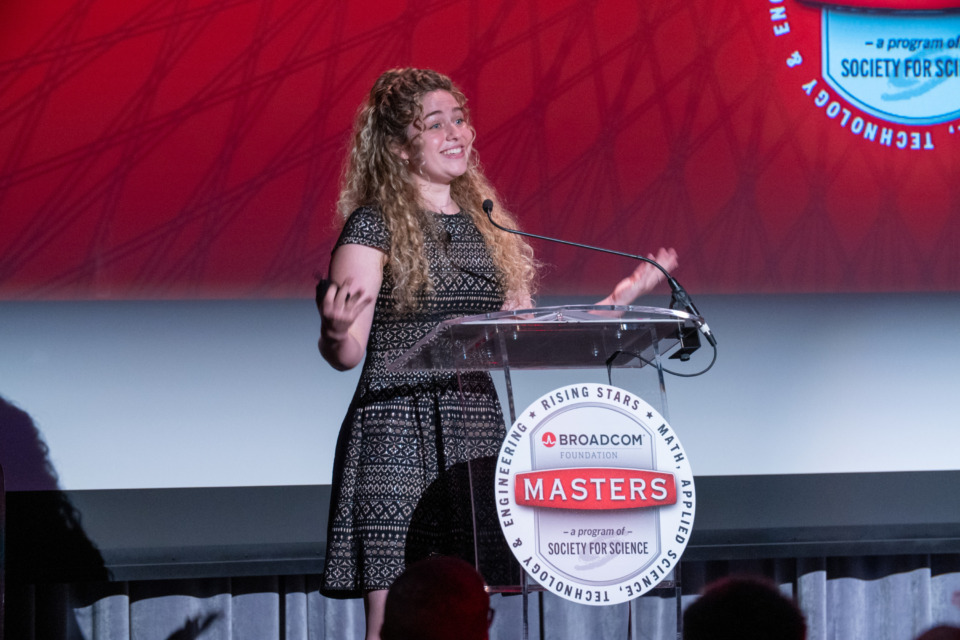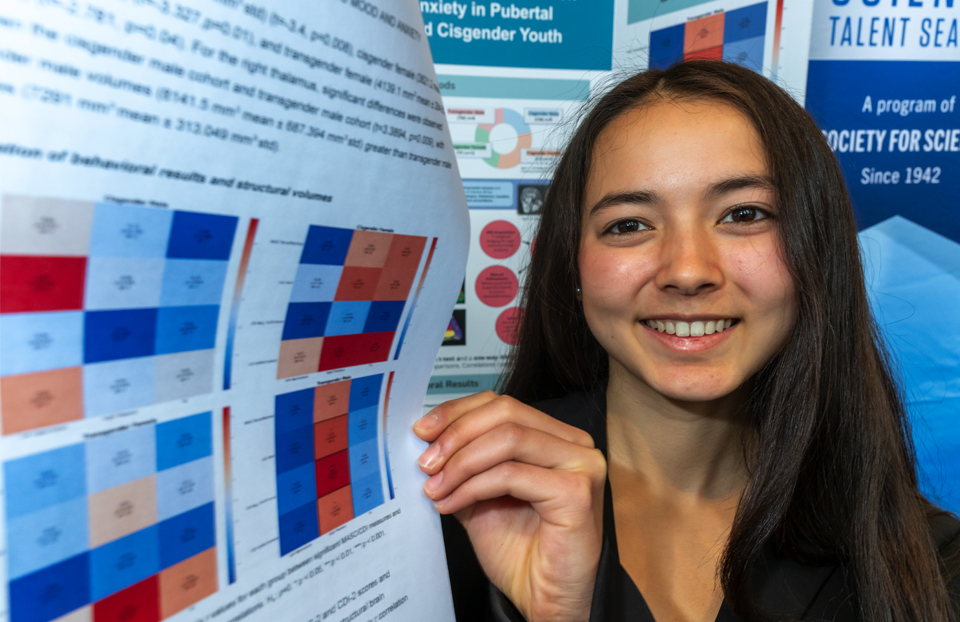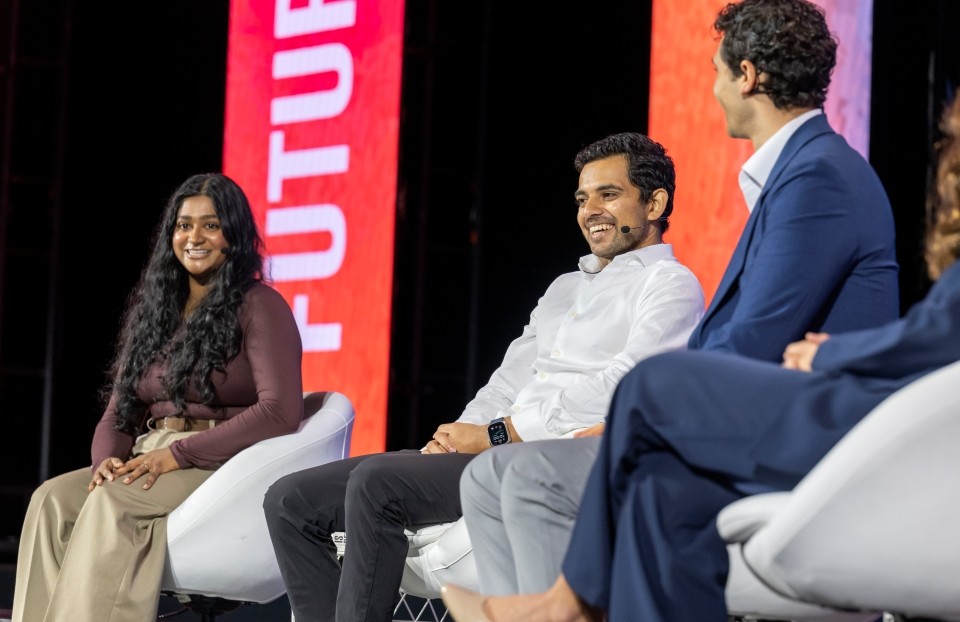Young and amazing: Alexander Wulff’s assistive tech

Alexander Wulff developed and manufactured HaptoTech, an inexpensive electronic aid that helps the visually impaired navigate in unfamiliar environments without the use of guide sticks. Only a junior in high school, he also founded Conifer Apps which offers 11 products.
Alexander, an Intel ISEF 2015 finalist, received The Annese & Associates Award & Scholarship for Academics in Technology in February at the Central New York Young and Amazing Awards by the Syracuse Media Group for HaptoTech.
Read the interview below to see how competing in Intel ISEF encouraged Alexander to share his love of technology with others.

IMPROVING ASSISTIVE TECHNOLOGY FOR THE VISUALLY IMPAIRED: For Intel ISEF 2015, I designed and constructed HaptoTech, wearable assistive devices for the visually impaired. These small wearable devices are designed to be put all over a user’s body.
The devices vibrate with increasing frequency as a wearer approaches an object, not only letting them know that an object is in their path but exactly where it is. The combination of multiple of these devices allows blind and visually impaired users’ brains to generate a 3D representation of their surroundings without the need to actually see.
The idea for HaptoTech spawned mainly from seeing the available assistive technologies for blind and visually impaired individuals.
One day, after I had started to learn more about developing electronics and embedded devices, I saw a blind person using a white cane, the stick-like device many use to navigate. I thought that there’s got to be some way that technology can transform such a crude device. Eventually, the idea snowballed into the family of devices that I have today.
Help others like Alexander Wulff share their love of STEM. Join the Society today.
DEVELOPING AND SHARING APPS WITH THE WORLD: Conifer Apps began as a way for me to transfer what I’d learned about iOS app development from various tutorials into the real world. I started off with some very basic games, and now I have a large family of successful apps that people use to do amazing things.
RandomName, my most popular app, is a random name generator with diversity. Users can select the ethnicity of the name they wish to generate, allowing writers, creative individuals, and more to create real-sounding, diverse names.
Another successful app is a web browser for the Apple Watch called WatchWeb. In WatchWeb, users can search for a term just like a regular browser and view that page’s text, links, images, and more right from their wrist.
SCIENCE FAIRS ENCOURAGE SHARING SUCCESSES: Winning my local science fair and going to Intel ISEF encouraged me to share my love of technology with others.
I was approached by the Technology Alliance of Central New York to give a talk to middle school students, and in January I presented to over 120 people about how they could get started coding their own apps and making electronic devices in their own homes.
I can do in my house what was once done in multi-million dollar computer laboratories. That’s great justification for devoting so much of my time to pursuing hobbies involving technology.
My involvement in Intel ISEF exposed me to so many different fields and ideas that I had no idea existed. Even in my own category of embedded systems, I was astounded with the depth and complexity of some of its subcategories, as well as other categories that had nothing to do with my project. This encouraged me to learn more about these various topics and further my education in STEM-related fields.
Intel ISEF was one of the coolest experiences I’ve ever had. My favorite part was simply interacting with hundreds of other bright students who are interested in the same things that I am, and seeing all that they’ve been able to accomplish at a young age, just like me.
RAPID STEM PROGRESS INSPIRED HIM INTO TECHNOLOGY: I watched STEM make huge leaps and bounds, and transform the world around me at a very young age. In the span of my lifetime, the fields of science and technology have progressed at an extremely rapid pace.
The knowledge that in my house I can do what was once done in multi-million dollar computer laboratories served as a great justification for devoting so much of my time to pursuing hobbies involving technology.
ON STAYING BUSY: There’s never a moment that I’m not working on something. I have tons of different projects that I devote my time to, between school, sports, and other activities.
My desk is currently overflowing with an amalgam of wires, microcontrollers, batteries, and electrical components that are part of some project or another — and I totally know where everything is.
These devices allow blind and visually impaired users’ brains to generate a 3D representation of their surroundings without the need to actually see.
I am continuing to develop my HaptoTech devices, and I’m also constantly tinkering with embedded and connected devices of all manners. In regard to Conifer Apps, right now I’m working on an app for a client that can interface with internet of things devices.
One of my main projects is something that I’m working on for my local science fair, which will hopefully take me to Intel ISEF again, but unfortunately I can’t share what that is yet.
WINNING AWARDS FOR TECH THAT HELPS OTHERS: The recognition from my community means a great deal to me. To see local businesses support young people doing amazing things shows me how much our commitment to bettering the world matters.
This CNY award will encourage me to keep pursuing my passions and help me to continue doing the activities that I love.
I’m passionate about using technology to improve people’s lives. HaptoTech won the grand award at the 2015 Central New York Science and Engineering fair and fourth place at Intel ISEF 2015. And now I’m working on getting a patent for the technology.
ADVICE TO OTHER STUDENTS INTERESTED IN STEM: My biggest piece of advice to anyone interested in any kind of STEM field is to start as young as you can. I’m incredibly grateful that I started learning about technology in middle school, which gave me plenty of time to progress to the point which I’m at today.
I also strongly encourage you to take advantage of the incredible wealth of free tutorials and resources available online — you don’t need to take a college or high school course to be good at it.


